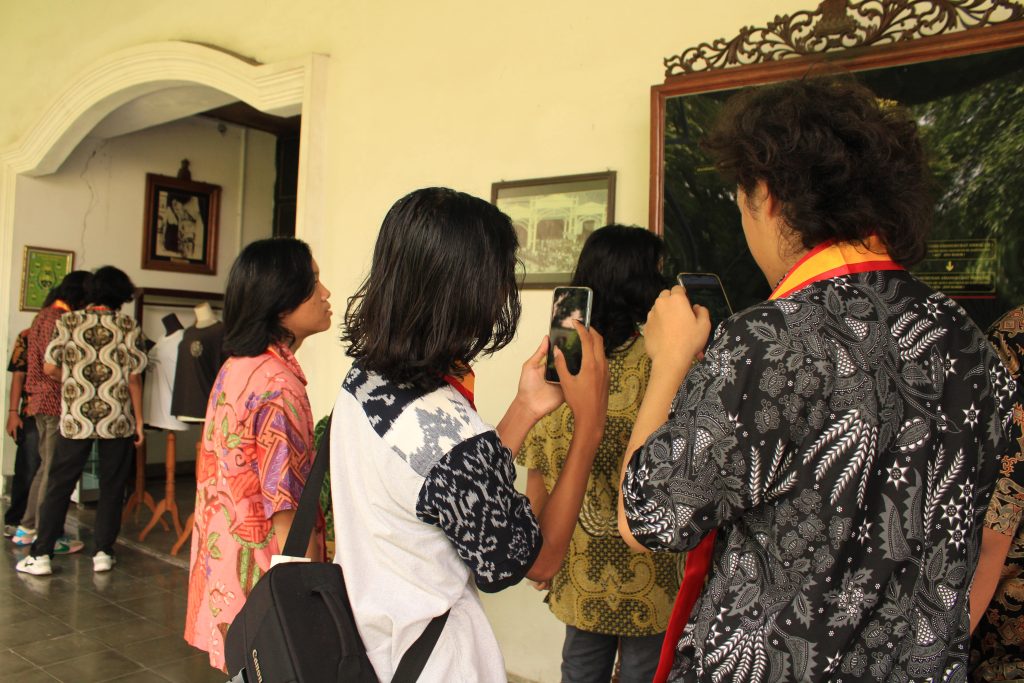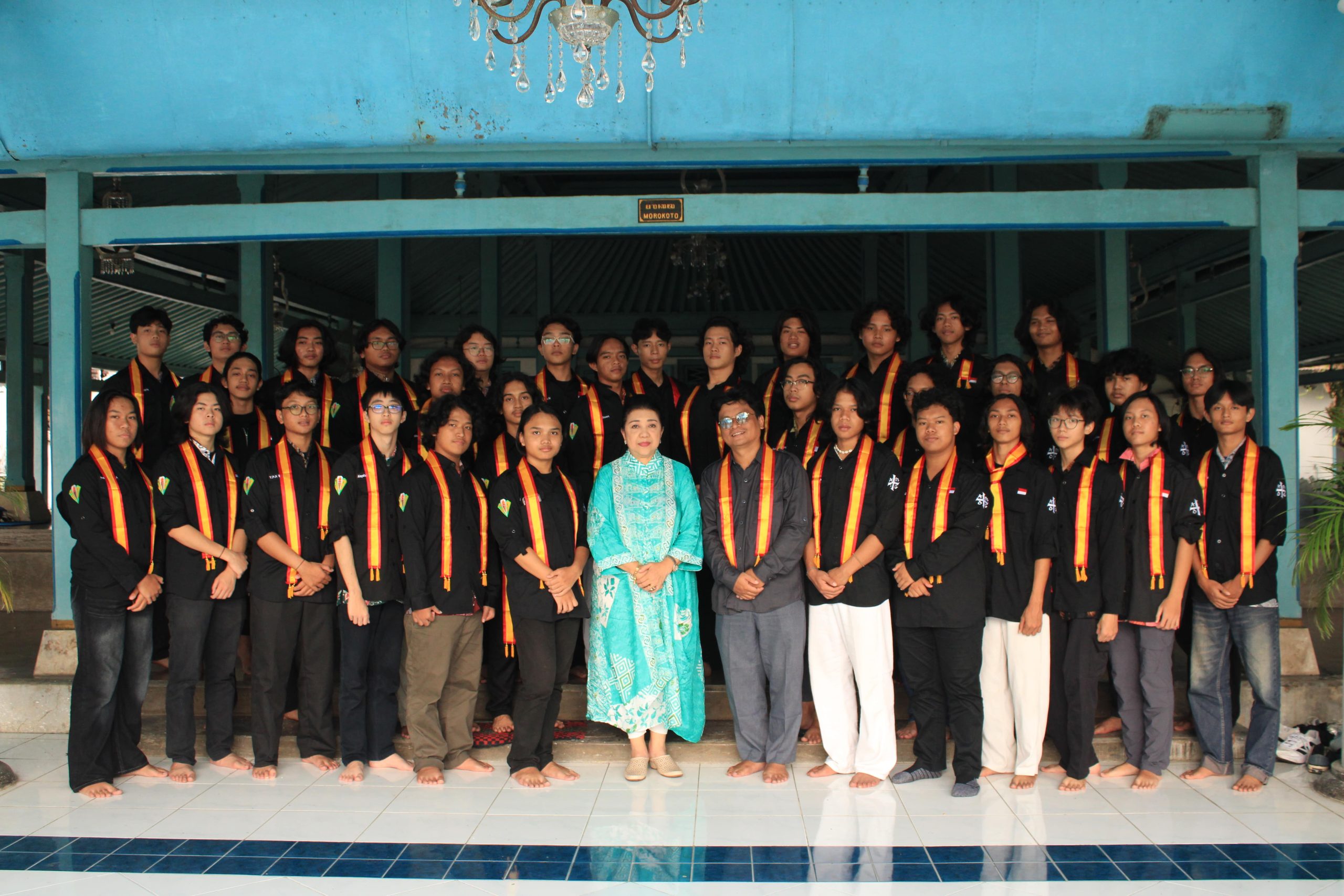Surakarta Palace and de Britto High School:
A few days ago, on May 17, 2025, my classmates and I visited the Palace of Surakarta as part of our P5 (Project for Strengthening Pancasila Students’ Profile). Our goal was to learn about the Surakarta Palace from the palace’s point of view. The journey took about an hour, and the roads were pleasant to travel on. Although I didn’t sit by the window, this allowed me to socialize with my friends, making the trip enjoyable. After some time observing the surroundings, we arrived at the Palace of Surakarta.
We entered through the main gate, a large entrance for vehicles. The palace has seven unique sections, and we had just passed through the first gate. Each gate has its philosophy, starting with the first gate called Nggladhak, symbolizing a person’s birth into the world. It features two statues of Gupala, representing acceptance of one’s fate. This gate is also used for animal sacrifices during certain ceremonies. Moving deeper into the palace, we encountered two pairs of banyan trees. Here, the philosophy represents a man’s authority and a woman’s grace, symbolizing the existence of two genders in the world. Further along, we arrived at Kori Wijil, a place signifying the journey to adulthood, indicating that one should know their purpose and position in life.
Across from Kori Wijil, we passed Kori Mangu, where a large mirror was displayed for self-reflection. It serves to assess whether we are ready in terms of appearance, attitude, and heart to enter the deeper areas of the palace. Next, we passed Braja Nala, which means Inner Weapons, suggesting that one should sharpen the spirit to become closer to the Creator. This area has two buildings: Marchu Kunda (where rule breakers are punished) and Kedhaton (for promotions of loyal servants). Even though Kedhaton is a place for honours, we were welcomed to rest there. We proceeded to Kori Kemandhungan, which prompted more introspection about our readiness to enter the palace.
After Kori Kemandhungan, we reached a place named Sri Manganti, marked by a large blue gate. If someone wishes to meet the king, they must wait at this point until a royal messenger calls them. This gate symbolizes paradise, meaning that after living through various experiences, we ultimately return to our father’s (God’s) house.
While there are many more places in the palace I could describe, our visit included these significant locations. This experience allowed me to appreciate the rich cultural values embedded within the palace, which interestingly align with the Ignatian-Jesuit spirituality of Kolese de Britto High School. The blue colour of the palace buildings represents divinity, akin to the blue sky signifying greatness. Surakarta Palace acknowledges God and seeks guidance in life, similar to de Britto’s spirit of Ad Maiorem Dei Gloriam, living for the greater glory of God.

This suggests that both de Britto and Surakarta Palace share a common spirituality regarding hope in God, despite using different languages. Another interesting spiritual aspect is the two large mirrors in the palace. These mirrors prompt us to reflect on whether we are ready to enter the palace. The mirrored moments of self-reflection are akin to the Examen, which encourages us to evaluate our actions and opportunities for improvement on daily basis. Reflection is crucial for recognizing what needs to change, enhancing our commitment to personal growth.
We should plan activities, but realize that without execution, there cannot be results or meaningful outcomes. Therefore, interpretation and deep understanding are vital to inspire action on our plans. Like the Examen, which is advised to be practiced twice a day, this indicates a shared spirituality between the Palace and de Britto, focusing on meaningful self-improvement through thorough reflection.
This illustrates that achieving a common goal can be accomplished through various paths. The different expressions of spirituality in Kolese de Britto High School and Surakarta Palace both lead to the same ultimate purpose. This was the essence of our P5 experience that day and the foundation of this reflection piece.
This perspective extends beyond the discussed spirituality to our views on various matters, particularly religion and belief systems. Recognizing that different beliefs do not necessarily imply negativity is essential. Numerous religions are teaching the importance of faith in God, doing good, and avoiding evil. Although differing belief systems exist, we should refrain from judging others’ faith, as everyone’s relationship with God is personal.
Similarly, regarding our approach to learning and understanding nature, we might encounter various challenges. However, every approach serves the singular goal of development. There are many ways to learn, whether through reading, listening to teachers, or practicing problem-solving. If the objective is to enhance learning and understanding, the outcomes will align with those aims.
Contributor: Dionisius Adven Pramana – Siswa SMA Kolese de Britto




